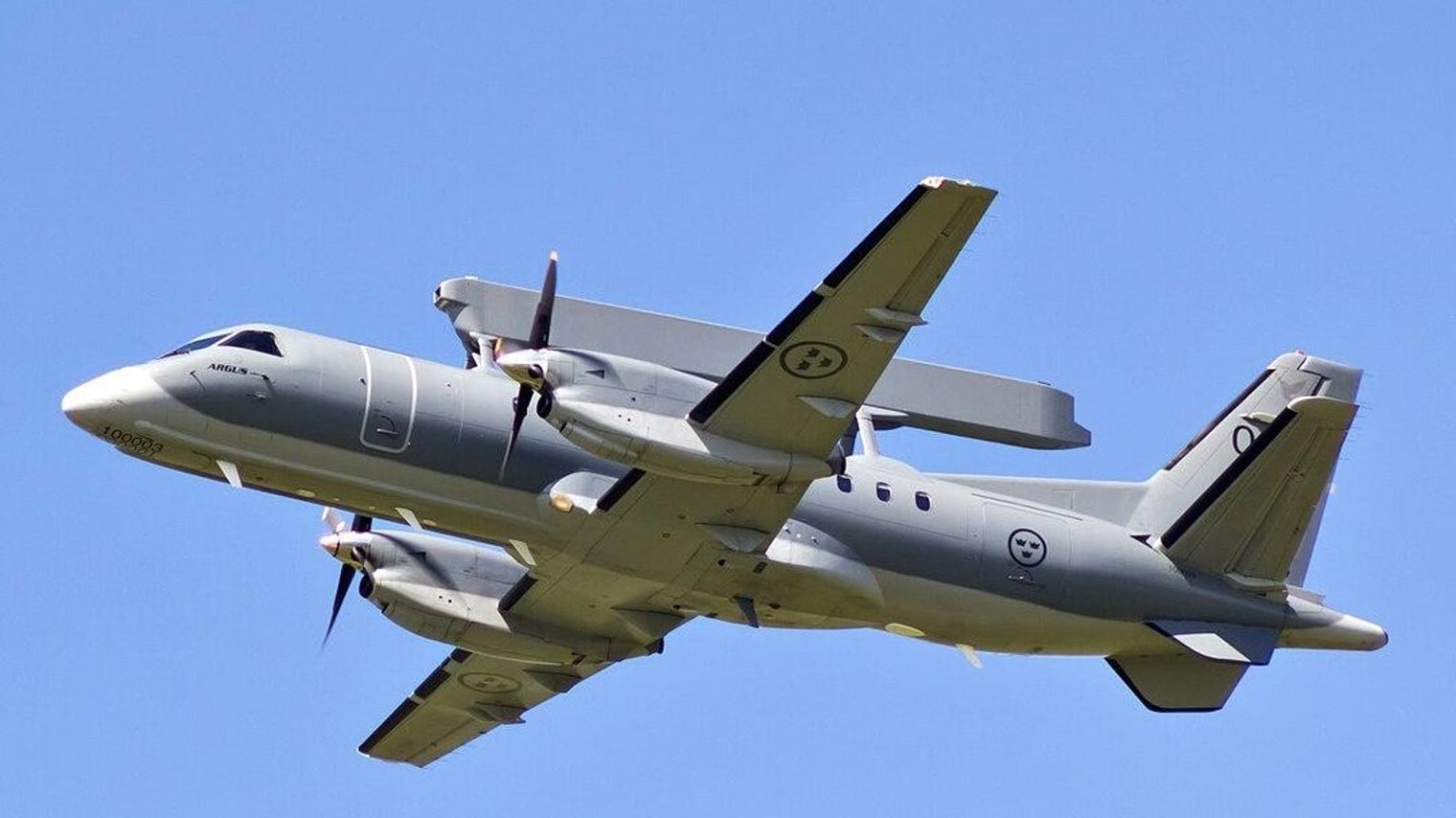In a surprise move, Sweden announced Wednesday it will donate to Ukraine a pair of airborne early warning aircraft—AEW planes, in military parlance.
“Ironically, I don’t think many people saw that coming,” quipped Knut Ola Naastad Strøm, a professor at the Norwegian Air Force Academy.
The high-flying aircraft with their top-mounted radars are, for Ukraine, “a new capability against both airborne and maritime targets,” wrote Pål Jonson, Sweden’s defense minister. Ukraine’s “capability to identify targets at long range will be strengthened.”
The Saab 340 AEW planes also have Link 16 datalinks, which allows them to securely trade data with Ukraine’s Lockheed Martin F-16 fighters.
But AEW planes are highly vulnerable. Just ask the Russian air force, which went to war with eight or nine operational Beriev A-50 AEW planes and, in a painful couple of months starting in January, lost two of them to Ukrainian missile ambushes. The Ukrainians even targeted the factory where Russian firm Beriev builds and repairs the A-50s.
The pair of Swedish-made AEW planes might be even more vulnerable than the A-50s. The A-50 has four jet engines with a top speed of 560 miles per hour and a 39,000-foot ceiling. The Saab 340 is a twin turboprop the flies no faster than 300 miles per hour and climbs no higher than 25,000 feet.
A-50 crews struggled to dodge Ukrainian missiles. Saab 340 crews might struggle even more. Worse for the Ukrainians, the Russian air force fields the most powerful air-to-air missile in Russia’s 27-month wider war on Ukraine—the R-37M, which ranges as far as 200 miles.
Russian air force Mikoyan MiG-31BM interceptors flying near the Russia-Ukraine border can threaten essentially all of Ukraine’s air space with their R-37Ms. “The long range of the R-37M, in conjunction with the very high performance and high operating altitude of the MiG-31BM … allows it significant freedom to menace Ukrainian aircraft,” the Royal United Services Institute noted.
The mere presence of Russian jets armed with R-37Ms has, more than once, forced Ukrainian fighter pilots to abandon their missions and dive for cover. It’s worth noting: a lumbering Saab 340 isn’t nearly as evasive.
AEW planes can’t hide. They are essentially radar platforms. When their radars are off, they’re not really doing their job. But a radar that’s radiating doesn’t just detect. It’s also detectable. It’s a safe bet that any time a Saab 340 takes flight, the Russians will know about it.
It’s not for no reason that the U.S. Air Force is moving away from traditional AEW planes and increasingly shifting the early-warning mission to satellites.
There’s no way the Ukrainian air force would say no to free AEW planes—even though the planes are vulnerable. But to avoid losing them more or less instantly, the Ukrainians will need to figure out some way to mitigate the risk the flying radars will face from Russian missiles.
That might mean flying them infrequently and unpredictably—and keeping their radars switched off until the last possible second. It might also mean flying them strictly in the safest air space: in western Ukraine, along Ukraine’s border with Poland.
The Ukrainians may even convince the Poles to let the Saab 340s fly in Polish air space, which the Russians might think twice before violating. NATO surveillance planes are already a daily presence on the Polish side of the border, gathering intelligence on Russian forces that NATO then passes along to Ukraine.
As a bonus, the Polish Air Force also flies Saab 340 AEW planes—and could help maintain the Ukrainian planes.
Sources:
1. Knut Ola Naastad Strøm: https://x.com/knutolst/status/1795723864359760236
2. Pål Jonson: https://x.com/PlJonson/status/1795717608010105241
3. Royal United Services Institute: https://www.rusi.org/news-and-comment/rusi-reflects/rusi-reflects-russia-ukraine-air-war
Read the full article here





